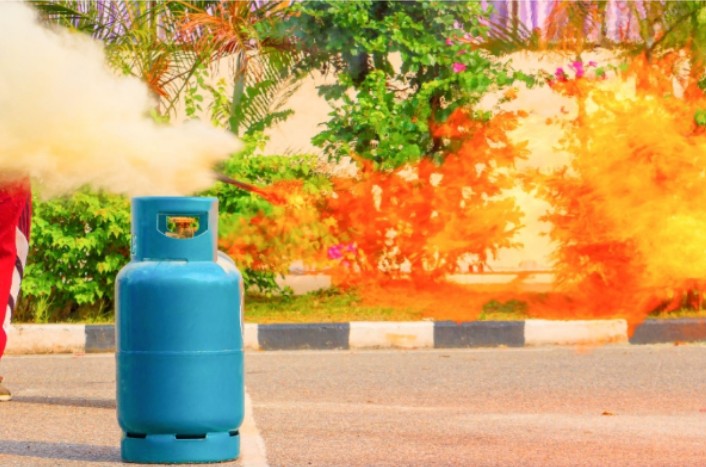When you think about environmentally friendly energy sources, what comes to mind? Solar? Wind? You’d be right to consider those renewable sources. But what about good old LPG-liquefied petroleum gas? This fossil fuel gets overshadowed by its dirtier cousin, coal, but LPG actually leaves a fairly small environmental footprint. Let’s take a closer look at the impact of LPG on our planet.
The Burning Truth About LPG and the Environment
LPG, also known as propane or butane, is a byproduct of the production and refining of natural gas and crude oil. It is commonly used for heating, cooking, and powering vehicles.
The Cleaner Burning Fossil Fuel
LPG is a mixture of propane and butane gases compressed into a portable liquid for easy storage and transportation. When burned, LPG emits carbon dioxide, just like other fossil fuels. However, it produces significantly less CO2 than coal or oil for the same amount of energy.
LPG also has way lower particulate emissions compared to solid fossil fuels. Particulates like soot are a major source of air pollution that can cause respiratory issues and climate impacts. The virtual absence of particulates makes LPG a much cleaner burning option than wood, coal or diesel.
LPG likewise emits very low levels of nitrogen oxides, sulphur oxides, and other noxious gases that contribute to smog, acid rain, and health problems. Overall, LPG combustion results in 15-20% less greenhouse gas emissions than oil and 45-50% less than coal. It is not a zero-emission energy source by any means, but LPG is one of the most environmentally friendly fossil fuel options available.
A Lower Carbon Footprint
The carbon footprint of an energy source accounts for its entire lifecycle, from extraction to consumption. On this full lifecycle basis, LPG still outperforms most fossil fuels in terms of greenhouse gas emissions.
LPG production and transportation result in relatively low emissions compared to other gas and liquid fuels. LPG is typically a byproduct of natural gas processing or crude oil refining, so there’s less need for dedicated extraction and processing operations. It’s also easier to store and transport LPG compared to gaseous fuels like natural gas.
Residential LPG gas is very popular in Brisbane and across Australia, with over 1 million Aussie homes connected to LPG. PlusGas, a leading LPG supplier based in Brisbane, ensures a reliable supply of clean-burning propane to families across the region. Thanks to LPG’s cleaner combustion profile, residential uses like heating, cooking, and hot water produce minimal emissions.
LPG has various industrial applications, from heating to manufacturing processes. Its lower carbon intensity makes LPG a smart choice for businesses looking to reduce their environmental footprint and combat climate change.
Easy to Handle and Transport
In addition to its lower emissions, LPG has some practical advantages that enhance its environmental benefits. As a liquid fuel, LPG is easily stored in portable cylinders or bulk tanks. This makes LPG an ideal fuel for remote locations, recreational vehicles, construction sites, and backup power generation where other energy sources may not be viable options.
LPG is also relatively easy and safe to transport compared to gaseous fuels. Liquified gas is loaded into specialised trucks or railcars for efficient distribution to bulk plants and final consumers. There’s much less risk of accidental releases or explosions with LPG versus high-pressure natural gas pipelines.
Challenges and the Future of LPG
While LPG has a comparatively small environmental footprint, it’s still a non-renewable fossil fuel that contributes to greenhouse gas emissions. Any continued use of LPG will exacerbate climate change, even if total emissions are lower than dirtier fuels.
Additionally, LPG production and use aren’t entirely emissions-free. There are still some unavoidable releases of methane, a potent greenhouse gas, during the extraction and distribution of LPG. Upgrading infrastructure and implementing better emissions monitoring will be key to minimising these methane leaks.
Ultimately, the long-term future has to involve a full transition away from all fossil fuels toward renewable energy sources like solar, wind, hydroelectric, and next-generation technologies. LPG can serve as a useful bridge fuel to reduce emissions in the interim, but it’s not a permanent solution to our energy and climate challenges.
In the meantime, consumers and businesses should look for opportunities to use LPG instead of higher-polluting energy sources. Homeowners can switch to LPG for heating and cooking instead of oil, wood, or coal. Industrial facilities can upgrade old, inefficient boilers to newer LPG-fired models. Families can use portable LPG cylinders for clean outdoor cooking and heating instead of burning wood or charcoal.
Every little reduction in fossil fuel emissions gets us a step closer to preserving a livable planet for future generations. LPG isn’t perfect, but it’s one of the most environmentally friendly options available today as the world transitions to a sustainable energy future.
If you live in the Brisbane area and want to make the switch to cleaner-burning residential LPG gas, get in touch with the experts at Plus Gas. As a leading local LPG supplier, they can seamlessly set up bulk or cylinder LPG delivery to your home while ensuring reliable, affordable, and environmentally-conscious service. Visit PlusGas.com.au to request a quote today!

